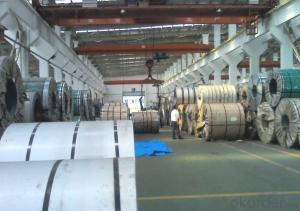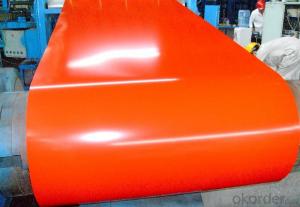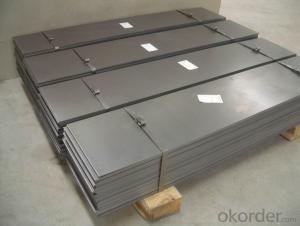GI Hot Dipped Galvanized Steel Sheet In Coils
- Loading Port:
- Qingdao
- Payment Terms:
- TT OR LC
- Min Order Qty:
- 25 m.t.
- Supply Capability:
- 10000 m.t./month
OKorder Service Pledge
OKorder Financial Service
You Might Also Like
GI Hot Dipped Galvanized Steel Sheet In Coils
1.Structure of GI Hot Dipped Galvanized Steel Sheet In Coils
GI Hot Dipped Galvanized Steel Sheet In Coils is one kinds of building material on construction.Steel sheet in melting zinc trough, the sticking of a layer of zinc sheet. At present mainly adopts continuous galvanizing process, namely the continuous roll of steel plate in the melt zinc plating tank made of galvanized steel sheet; Alloying of galvanized steel. This kind of steel plate is made by hot dip method, but after the slot, immediately heated to a temperature of about 500 ℃, it make the generation of zinc and iron alloy membrane. This kind of galvanized volumes with good coating of the sex and weldability.
2.Main Features of GI Hot Dipped Galvanized Steel Sheet In Coils.
1) Rust-proof
2) Water-proof
3)Durable using
3. GI Hot Dipped Galvanized Steel Sheet In Coils Images
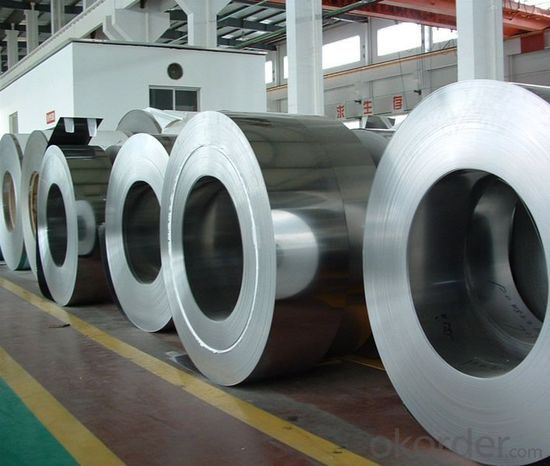
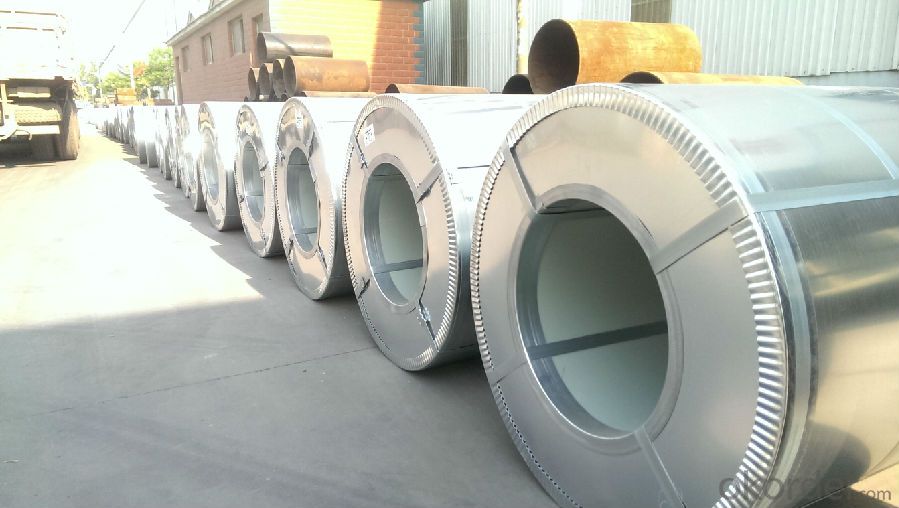
4. GI Hot Dipped Galvanized Steel Sheet In Coils Specification
1)Based raw material: Hot rolled steel coils or Cold rolled steel coils
2) Thickness
3) Width
4)Coating mass
5) Spangle
6)Surface treatment
7)Coil inner diameter
8)Painting kind
9)Painting color
10)Painting thickness
5.FAQ of GI Hot Dipped Galvanized Steel Sheet In Coils
We have organized several common questions for our clients,may help you sincerely:
①How about your company?
A world class manufacturer & supplier of castings forging in carbon steel and alloy steel,is one of the large-scale professional investment casting production bases in China,consisting of both casting foundry forging and machining factory. Annually more than 8000 tons Precision casting and forging parts are exported to markets in Europe,America and Japan. OEM casting and forging service available according to customer’s requirements.
②How to guarantee the quality of the products?
We have established the international advanced quality management system,every link from raw material to final product we have strict quality test;We resolutely put an end to unqualified products flowing into the market. At the same time, we will provide necessary follow-up service assurance.
③How is the properties of the products?
The material and mechanical properties
Material | Tensile test | ||||||
Rel (MPa) | Rm (MPa) | Elongation | |||||
1.8~<2.0< span=""> | 2.0~<2.5< span=""> | 2.5~<3.2< span=""> | 3.2~<4.0< span=""> | ≥4.0 | |||
SPHC | ≥270 | ≥29 | ≥30 | ≥31 | ≥32 | ≥32 | |
SPHD | ≥270 | ≥32 | ≥33 | ≥35 | ≥37 | ≥39 | |
SPHE | ≥270 | ≥33 | ≥35 | ≥37 | ≥39 | ≥41 | |
SS330 | ≥205 | 330~430 | ≥26 | ||||
SS400 | ≥245 | 400~510 | ≥24 | ||||
SAPH370 | ≥370 | ≥255 | ≥32 | ||||
- Q:What are the different coating options available for steel strips?
- Steel strips have several coating options available to them, each with its own unique properties and benefits. Some commonly used coatings include: 1. Zinc Coating: Often referred to as galvanization, zinc coating is a popular choice due to its excellent corrosion resistance and protection against rust and environmental factors. It is commonly used in outdoor applications or high humidity environments. 2. Paint Coating: Paint coatings not only provide aesthetic appeal but also offer corrosion protection. Different types of paints, such as epoxy, polyurethane, or acrylic, can be applied to steel strips to provide varying levels of durability and resistance to chemicals, UV rays, and other environmental factors. Paint coatings find applications in architecture, automotive, and industrial sectors. 3. Polymer Coating: Polymer coatings, like polyvinylidene fluoride (PVDF) or silicone polyester, are applied to steel strips to enhance weather resistance, durability, and aesthetic appeal. These coatings are commonly used in building and construction, automotive, and appliance industries. 4. Epoxy Coating: Epoxy coating is highly resistant to corrosion and chemicals, making it suitable for industries where steel strips are exposed to harsh chemicals or corrosive environments, such as the oil and gas, marine, or chemical processing industries. 5. Tin Coating: Tin coating, also known as tin plating, provides a decorative and corrosion-resistant finish to steel strips. It is widely used in the manufacturing of food cans, beverage cans, and other packaging materials. 6. Aluminum Coating: Aluminum coating, also known as aluminum-zinc alloy coating or Aluzinc, offers excellent corrosion resistance and heat reflectivity. It is commonly used in roofing and cladding applications. 7. Phosphate Coating: Phosphate coating is a conversion coating that enhances the adhesion and corrosion resistance of steel strips. It is frequently used as a pre-treatment before applying other paint or coating systems. These examples represent just a fraction of the available coating options for steel strips. The choice of coating depends on specific application requirements, budget, and desired performance characteristics.
- Q:Are steel strips suitable for making fasteners?
- Yes, steel strips are suitable for making fasteners. Steel is known for its strength and durability, making it an ideal material for fastener production. Steel strips can be easily formed into various shapes and sizes, allowing for the manufacturing of different types of fasteners such as screws, bolts, nuts, and clips. Additionally, steel strips offer excellent resistance to corrosion, ensuring that the fasteners remain intact and functional even in harsh conditions. The hardness of steel also provides reliable tensile strength, allowing fasteners to securely hold objects together. Overall, steel strips are a reliable and versatile material choice for making fasteners.
- Q:Are steel strips used in the production of kitchen utensils?
- Yes, steel strips are commonly used in the production of kitchen utensils due to their durability and corrosion resistance.
- Q:What are the tolerances for dimensional accuracy of steel strips?
- The tolerances for dimensional accuracy of steel strips can vary depending on the specific requirements and industry standards. However, in general, the tolerances for dimensional accuracy of steel strips are typically defined by the thickness, width, and length of the strip. For thickness, the tolerance is usually specified as a range or a maximum allowable deviation from the desired thickness. This tolerance can be expressed in terms of a percentage or an absolute value, depending on the application. For example, a common thickness tolerance for steel strips might be ± 0.05mm or ± 5% of the desired thickness. Similarly, the tolerance for the width of steel strips is typically specified as a range or a maximum allowable deviation. This tolerance ensures that the strip is within the acceptable width limits. For instance, a typical width tolerance for steel strips might be ± 0.1mm or ± 1% of the desired width. The tolerance for the length of steel strips is often specified as a maximum allowable deviation from the desired length. This tolerance ensures that the strip is within the acceptable length limits. For example, a common length tolerance for steel strips might be ± 1mm or ± 0.5% of the desired length. It is important to note that these tolerances can vary depending on the specific application, industry standards, and customer requirements. Different industries such as automotive, construction, or manufacturing may have their own specific tolerances for dimensional accuracy of steel strips. Therefore, it is crucial to consult the relevant industry standards or customer specifications to determine the exact tolerances required for a particular application.
- Q:How is the hardness of steel strips measured?
- There are several methods available for measuring the hardness of steel strips, including the Rockwell hardness test, the Brinell hardness test, and the Vickers hardness test. These methods all involve applying a standardized force to the surface of the steel strip using a specific indenter, and then evaluating the depth or size of the resulting indentation. By comparing the indentation dimensions with a standard scale, the hardness value of the material can be determined. These tests offer a quantitative measurement of the steel strip's hardness, which is essential for evaluating its mechanical properties and determining its suitability for various applications.
- Q:What is the weldability of a steel strip?
- The weldability of a steel strip refers to its ability to be joined or welded to other materials or components. It is determined by various factors such as the chemical composition, carbon content, and microstructure of the steel strip. High weldability indicates that the steel strip can be easily welded without any significant issues or complications. This is usually achieved when the steel strip has a low carbon content and contains elements such as manganese, silicon, and phosphorus that promote good weldability. On the other hand, steel strips with poor weldability may present challenges during the welding process. These challenges can include the formation of weld defects such as cracks, porosity, or brittleness. In such cases, additional measures like preheating, post-weld heat treatment, or the use of specific welding techniques may be necessary to ensure a successful weld. The weldability of a steel strip is an important consideration in various industries, particularly in construction, automotive, and manufacturing. It is crucial to choose a steel strip with appropriate weldability properties to ensure that the welded joints are strong, durable, and meet the required specifications and standards.
- Q:Can steel strips be used in corrosive environments?
- When it comes to corrosive environments, the use of steel strips is possible, but the specific type of steel and its corrosion resistance will depend on the particular corrosive environment. Take stainless steel strips, for example; they have a high resistance to corrosion and can be employed in a wide range of corrosive environments. These strips contain at least 10.5% chromium, which creates a protective layer of oxide on the steel's surface, preventing further corrosion. They are commonly utilized in industries such as chemical processing, marine, and food processing, where exposure to corrosive substances is prevalent. Nevertheless, not all steel strips possess the same level of corrosion resistance. Carbon steel strips, for instance, are more vulnerable to corrosion and may not be suitable for highly corrosive environments. To ensure the durability and performance of the steel strips in such cases, additional safeguards such as coatings, galvanization, or the use of corrosion-resistant alloys may be necessary. When selecting steel strips for use in corrosive environments, it is crucial to consider the specific corrosive environment, the intended application, and the expected lifespan. Seeking guidance from experts or referencing industry standards and guidelines can aid in determining the most appropriate corrosion-resistant materials for a given situation.
- Q:What are the factors that affect the fatigue resistance of steel strips?
- There are several factors that can affect the fatigue resistance of steel strips, including the material's composition and microstructure, the presence of any defects or imperfections, the level of applied stress, the frequency and amplitude of cyclic loading, and the environmental conditions in which the steel strips are used.
- Q:Can steel strips be used in the production of kitchen appliances?
- Kitchen appliances can indeed incorporate steel strips in their production. Steel is widely favored in the manufacturing of kitchen appliances because of its exceptional durability, strength, and corrosion resistance. Steel strips can serve multiple functions in kitchen appliances, including forming the body, frame, shelves, handles, and even internal mechanisms. By utilizing steel strips, kitchen appliances are guaranteed to possess longevity, stability, and an elegant aesthetic. Moreover, steel's effortless cleaning and maintenance properties make it an exceedingly practical choice for kitchen appliances that encounter high temperatures, moisture, and frequent usage.
- Q:What are the safety precautions when handling steel strips?
- When handling steel strips, there are several important safety precautions to keep in mind: 1. Personal Protective Equipment (PPE): Always wear the appropriate PPE, including safety glasses, gloves, and steel-toed boots. This will protect you from potential hazards such as sharp edges, flying debris, or accidental drops. 2. Proper Lifting Techniques: Steel strips can be heavy and bulky, so it is crucial to use proper lifting techniques to avoid strain or injury. Bend your knees, keep your back straight, and use your leg muscles to lift the strips. If necessary, use lifting aids or equipment to assist with the lifting process. 3. Secure Storage and Handling: Ensure that steel strips are stored and handled in a secure and organized manner. This will prevent them from falling or shifting, which could cause injury. Use appropriate storage racks, pallets, or straps to keep the strips stable and in place during transport or storage. 4. Slips, Trips, and Falls: Keep work areas clean and free from obstacles, spills, or debris that could cause slips, trips, or falls. Maintain good housekeeping practices and use anti-slip mats or flooring when necessary. Be cautious of any uneven surfaces or slippery conditions, especially when moving or transporting steel strips. 5. Sharp Edges and Burrs: Steel strips can have sharp edges or burrs that can cause cuts or lacerations. Inspect the strips for any sharp edges, and if necessary, use deburring tools to remove any burrs. Be cautious when handling the strips to avoid accidental cuts or scrapes. 6. Proper Equipment and Machinery: When using equipment or machinery to handle steel strips, ensure that they are in good working condition and properly maintained. Follow all safety guidelines and instructions provided by the manufacturer. Never operate equipment if you are not trained or authorized to do so. 7. Communication and Teamwork: If working as part of a team, communicate effectively with your colleagues to ensure everyone is aware of their tasks and any potential hazards. Practice good teamwork and assist one another when required, especially when lifting or moving heavy steel strips. By following these safety precautions, you can minimize the risk of accidents, injuries, and damage when handling steel strips. Always prioritize safety and take the necessary precautions to protect yourself and others in the workplace.
1. Manufacturer Overview |
|
|---|---|
| Location | |
| Year Established | |
| Annual Output Value | |
| Main Markets | |
| Company Certifications | |
2. Manufacturer Certificates |
|
|---|---|
| a) Certification Name | |
| Range | |
| Reference | |
| Validity Period | |
3. Manufacturer Capability |
|
|---|---|
| a)Trade Capacity | |
| Nearest Port | |
| Export Percentage | |
| No.of Employees in Trade Department | |
| Language Spoken: | |
| b)Factory Information | |
| Factory Size: | |
| No. of Production Lines | |
| Contract Manufacturing | |
| Product Price Range | |
Send your message to us
GI Hot Dipped Galvanized Steel Sheet In Coils
- Loading Port:
- Qingdao
- Payment Terms:
- TT OR LC
- Min Order Qty:
- 25 m.t.
- Supply Capability:
- 10000 m.t./month
OKorder Service Pledge
OKorder Financial Service
Similar products
New products
Hot products
Related keywords
